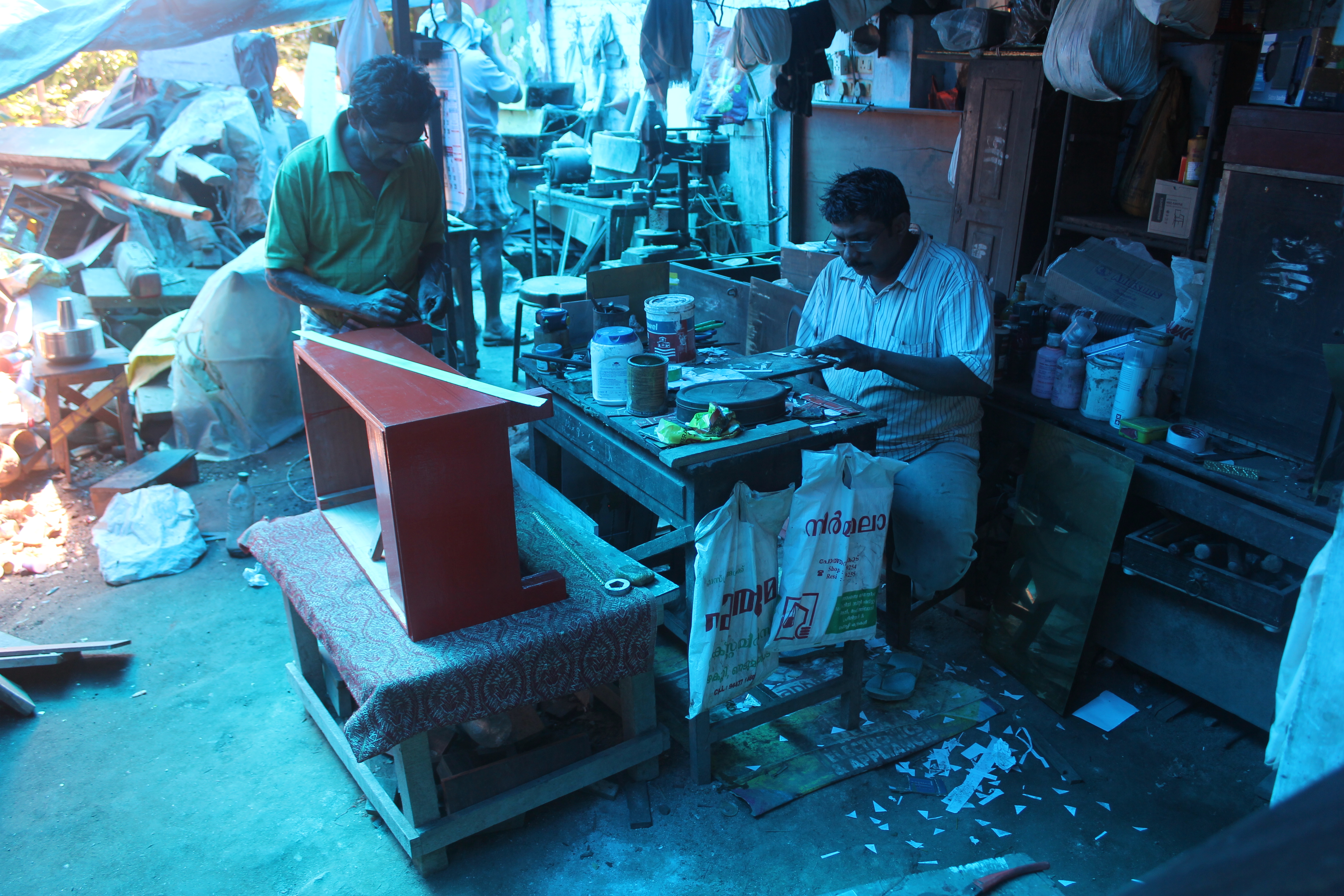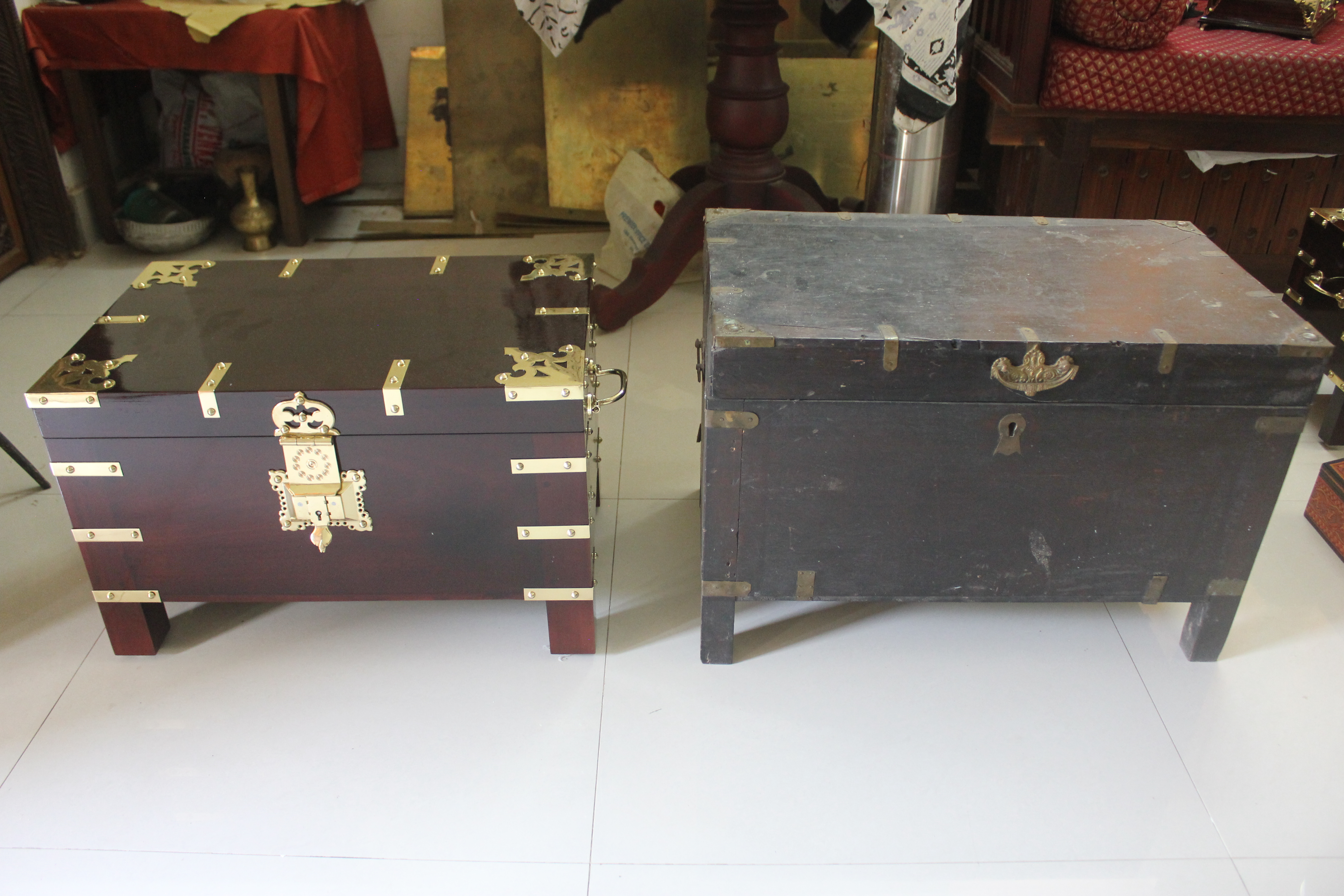Meet Suresh Kumar Who is Keeping The Legacy of Kerala’s Nettur Petti Alive
A jewel box - the Nettur Petti was used by women in the royal and aristocratic families as well as, in temples to store ornaments

Every state in India has artefacts and aesthetic crafts that are unique to it. Usually, the fine technique behind such artwork dates back to a couple of centuries.
In Kerala, the Nettur Petti is one such artefact of historical significance. A jewel box – it was used by women in the royal and aristocratic families as well as in temples to store the ornaments of the idol. This petti (box) is named after Nettur, the village in Kerala where the craft is believed to have originated.
VV Suresh Kumar is from a family of traditional wood craftsmen.
His father, Vishwanathan Achari, was a master craftsman who made the finest Nettur Petti’s also known as the Malabar box.
Looking for better prospects, he moved out from Trivandrum to Bengaluru. His skill took him there to become the chief craftsman of the city’s most famous antique store, Natesan Antiqarts, for a long time. As a result, Suresh and his brother were educated in Bangalore but returned to Kerala in the early 1980’s. In 1987, his father was recognized for his skill and was awarded the Best Craftsman Award by the Kerala State.
A commerce graduate, Suresh toyed with taking up an assignment in a government office, but, deep in his heart, he felt the need to keep his father’s craftsmanship alive. He hence, took up this traditional craft as an occupation.
The talented artist’s workshop is within the premises of his home in Trivandrum, where you will almost always find him and three others passionately working to create traditional handicrafts.

“As a child, I loved watching my father at work. I never tried to learn the craft consciously. Carving wood is something that came naturally to me,” says Suresh. “I picked up the intricacies of the craft from watching my father and am just as particular about the quality of my work as he was”.
At the workshop, Vishwakalalaya Handicrafts, Suresh, his 80-year-old uncle, a cousin and one of his father’s students work on restoring old boxes. They also create new boxes, considered as collector’s items in many homes. Designing customised boxes is also something that they do, though they insist on maintaining the traditional structure.
This workshop is probably one of the few places where old, worn out boxes are repaired and restored to their original grandeur.

“These handmade boxes were traditionally made of rosewood and the majority continue to be made this way too. However, we also use jackfruit wood, mahogany and teak wood. Brass is used for the embellishments that decorate the exterior of the boxes. Everything including the locks, handles, nails and hinges for these boxes are made by hand,” adds Suresh.
The range of products that they work on is amazing. Apart from the Nettur petti, which has a hut shaped lid, there is the Kaala petti which has legs and a flat lid and was used to keep important documents. The Kathakali petti also known as the Aata petti, has a semi-circular lid and was used to keep the dress and ornaments of a Kathakali dancer.
Today these boxes can be customized by using specific embellishments, colour and size as per the customer’s choice.
“The traditional Ari petti was used to store grains while the Arapu petti was used to store spices. The Chella petti was the betel leaf and nut box. The Ayurvedic Medicine chest is a large cupboard like box which has around 16-18 drawers inside. Each draw was used to store a different medicine. The Kai petti is a small box which is like a briefcase. The accountant of a wealthy man carried this around with money and important papers kept in it.,”continues Suresh.
The Parra was used to measure grain.

Small round boxes called Cheppu’s are made too. These are made using the root of the tree. The thickness of the root usually determines the size of the cheppu. These little boxes were and are used as trinket boxes as well as can store any small miscellaneous thing.
They make for beautiful traditional gifts.

“For many years my father used to put up his creations at Kairali, the Kerala State Handicrafts Emporium, at Trivandrum. Interestingly, he was the one who introduced the Nettur Petti in this emporium. By word of mouth and the coverage he and I got by the press, we have deeply established ourselves in this field,” says a satisfied Suresh.
Presently, due to various reasons, they do not need to sell their ware at the emporium. They have enough customers visiting their workshop to either get old boxes repaired or to place orders for customized new boxes.
Customizing is an interesting challenge which appeals to Suresh and his co-workers.

At his workshop, they have designed and created doors of the sanctum sanctorum for a few well-known temples in Kerala. They also made the boxes in which the relics of two saints were carried to the Vatican for their canonization by the Pope.
Suresh has also trained apprentices, who are now craftsman. The All India Handicrafts Development Board recognised Suresh’s establishment, Vishwakalalaya Handicrafts, as a training centre, where students are sent to learn the craft.
Suresh also intends to create a website shortly.
Like this story? Or have something to share? Write to us: [email protected], or connect with us on Facebook and Twitter (@thebetterindia).
Aparna Menon is a freelance writer, writing for various newspapers for the past 10 years. Her main fields of interest are wildlife, heritage and history. A keen traveller, she loves to read and write and does a lot of art work too.
If you found our stories insightful, informative, or even just enjoyable, we invite you to consider making a voluntary payment to support the work we do at The Better India. Your contribution helps us continue producing quality content that educates, inspires, and drives positive change.
Choose one of the payment options below for your contribution-
By paying for the stories you value, you directly contribute to sustaining our efforts focused on making a difference in the world. Together, let’s ensure that impactful stories continue to be told and shared, enriching lives and communities alike.
Thank you for your support. Here are some frequently asked questions you might find helpful to know why you are contributing?


This story made me
-
97
-
121
-
89
-
167













